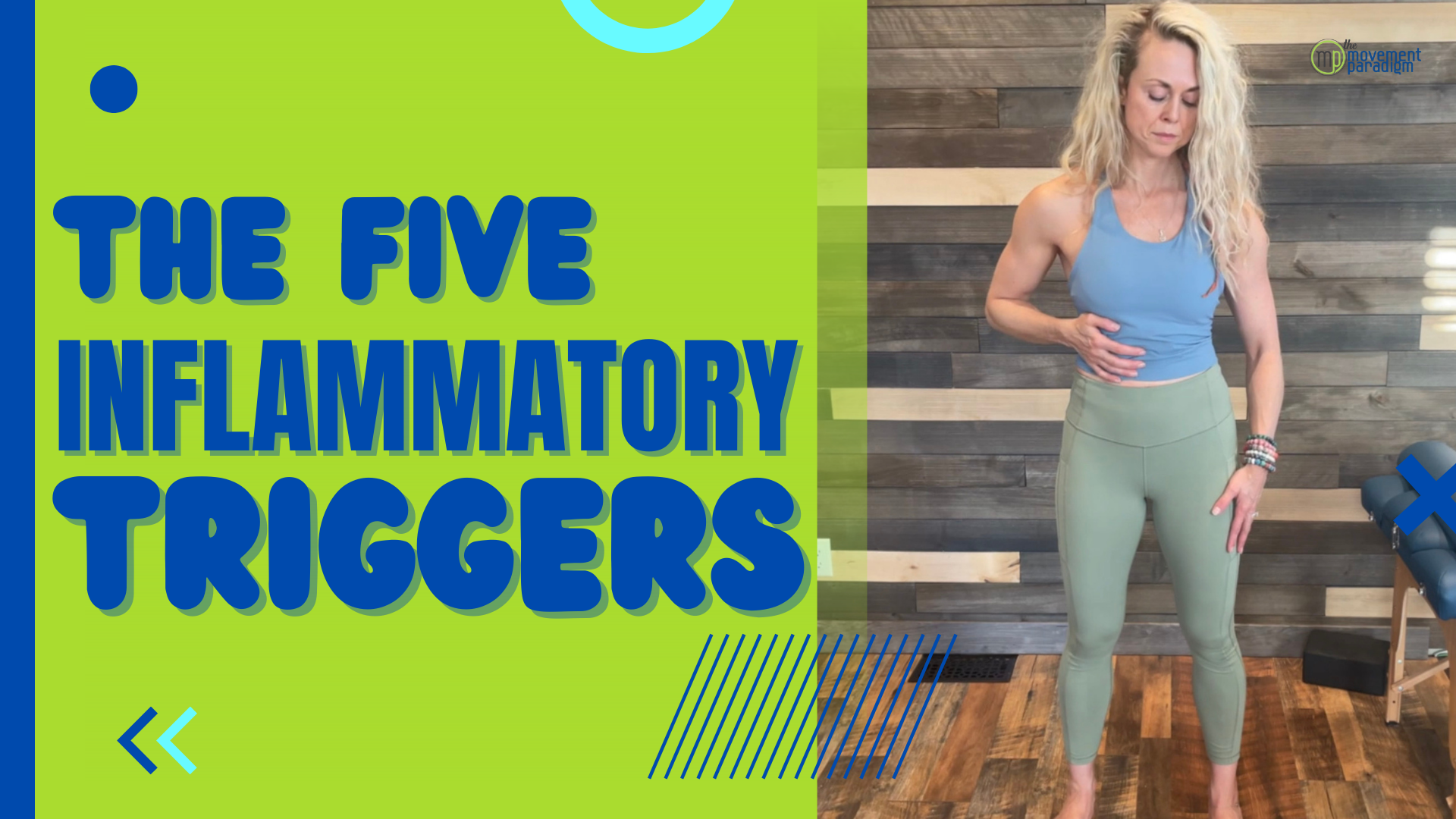Are you experiencing pain that just keeps moving from one body part to another? Maybe you’re feeling some puffiness under your eyes, swollen lymph nodes, or even swollen ankles. Or perhaps you keep getting sick; you keep catching anything that comes your way. Well, today, we’re going to dive into five different potential inflammatory triggers that you could be experiencing.
Rather watch or listen?
What you need to know about inflammation
Did you know that 75 to 90% of all chronic diseases are now associated with excessive or persistent inflammation?
If you get an ankle sprain and roll your ankle, you’re going to have a normal inflammatory response. That’s typically going to be within the first four to five days. You’ll have some swelling, some pain, and white blood cells coming to the area. That is exactly what our immune system is supposed to do.
Now, excessive or persistent inflammation occurs when acute inflammation becomes chronic, or we lose our tolerance. This is when it feels like when one thing resolves, there’s another and another; it almost feels like bad luck. This is typically associated with chronic or systemic inflammation.
Inflammatory triggers
Now, let’s dive into five potential inflammatory triggers. Although it is not an extensive list, it can help to identify sources of inflammation.
1. Food
Food is medicine. When thinking about food from a nutrient repletion standpoint and how nutrients affect every reaction in our body, not having enough nutrients can cause inflammation. We can also have potentially inflammatory foods, anything from a food allergy or food intolerance to food sensitivity. The foods we consume regularly could perpetuate or contribute to inflammation.
2. Bugs
This can include Lyme disease or parasites, for example. If you’re traveling outside the country, have a dog, or live in certain parts of the world can all increase your risk for a parasitic infection. I do stool tests regularly, and while I don’t often see parasites, when they do show up, it’s something that needs addressing.
3. Toxins
We can have internal toxins and external toxins. In our world, we are exposed to toxins all the time—plastics, chemicals in cleaning products, facial products, hair products, and so much more. But, we can also be exposed to things like mold, for example. We can also have an infection related to an internal toxin, which can be a viral or bacterial infection.
4. Trauma
This can be emotional trauma, physical trauma, ongoing current stress, or trauma that we’ve experienced as a child. All of this can perpetuate an inflammatory cycle. Stress changes the colonization of bacteria in our gut. Our gut comprises 70% of our immune system, so over time, that can contribute to an inflammatory response.
5. Hormones
Hormonal imbalances such as thyroid issues, high estrogen (an estrogen-dominant state), low testosterone, low progesterone, and insulin resistance can all attribute to increased inflammation.
When we consider all these potential categories of triggers (though not exhaustive), it helps us get an idea of what could be happening in our bodies. When you have more of these present, there is a greater chance, of course, that you may have a more pronounced inflammatory response.
Key Takeaway
When you’re starting to explore what might be an issue for you, these are some things to consider from an overall lifestyle perspective to see how you can begin to heal your body. Know that no matter what comes up in any of those categories, there are solutions for it. You can change your diet and influence your hormones through what you’re eating, how you’re sleeping, and how you’re managing your stress levels. You can address past traumas, treat infections, and address parasites. So, no matter what, you have the ability to identify, address, and heal your body.
If you found this information helpful, please be sure to give it a like, share it with others, leave a comment below, and, of course, subscribe to our YouTube channel, The Movement Paradigm®, for weekly tips on mindset, nutrition, and movement.
If you’re looking for personalized guidance on your journey and feel that you need an individualized approach, please don’t hesitate to reach out to us. We would welcome the opportunity to assist you.
If you’re interested in accessing a wide range of programs, including those on nutrition, somatics, and vagus nerve exercises, as well as movement programs to help you optimize your overall wellness, consider checking out our app, The Movement Paradigm, available on both Apple and Google platforms.
Reference:
Liu YZ, Wang YX, Jiang CL. Inflammation: the common pathway of stress-related diseases. Front Hum Neurosci. 2017;11:316. doi:10.3389/fnhum.2017.00316
Other things that might interest you:


